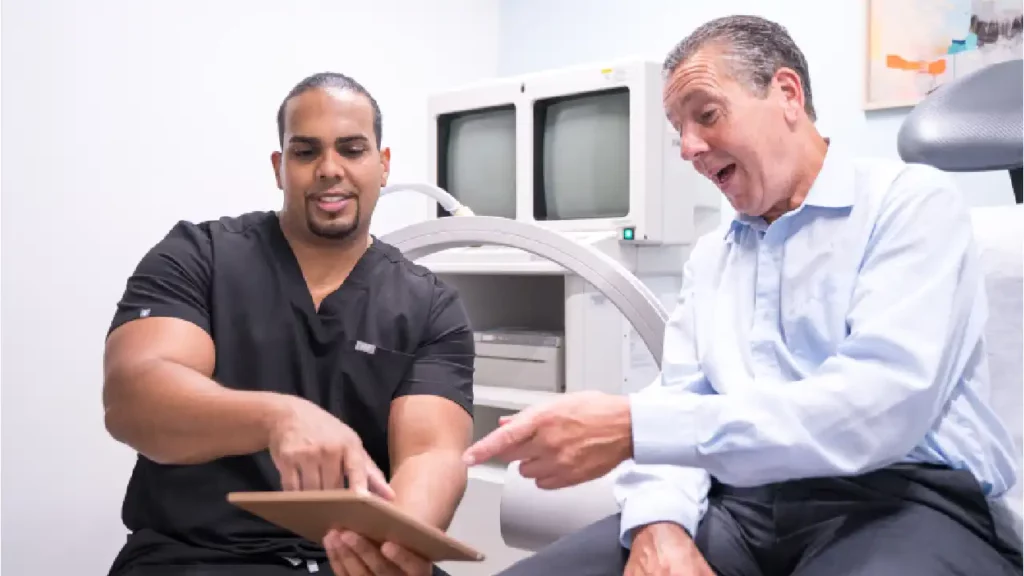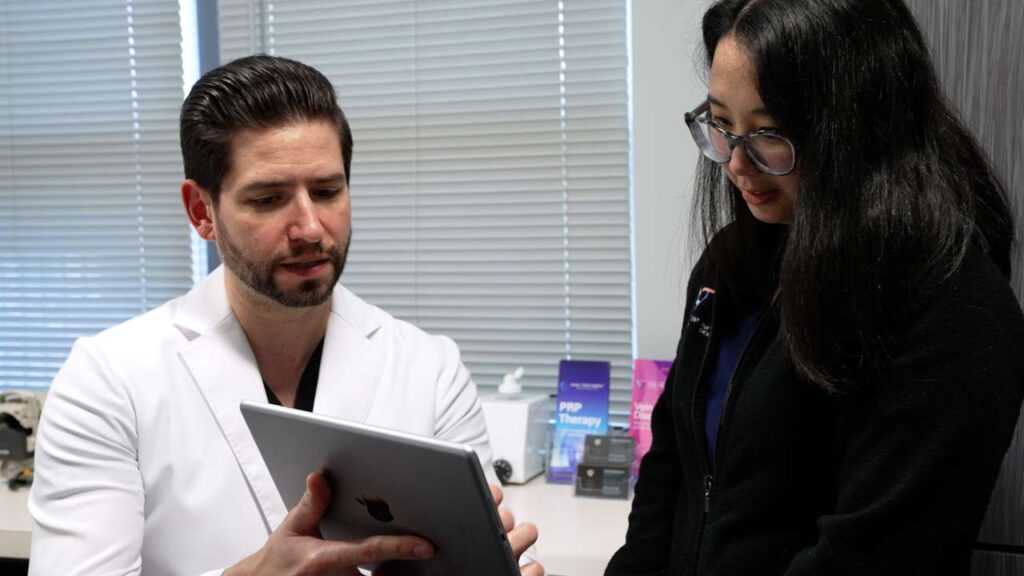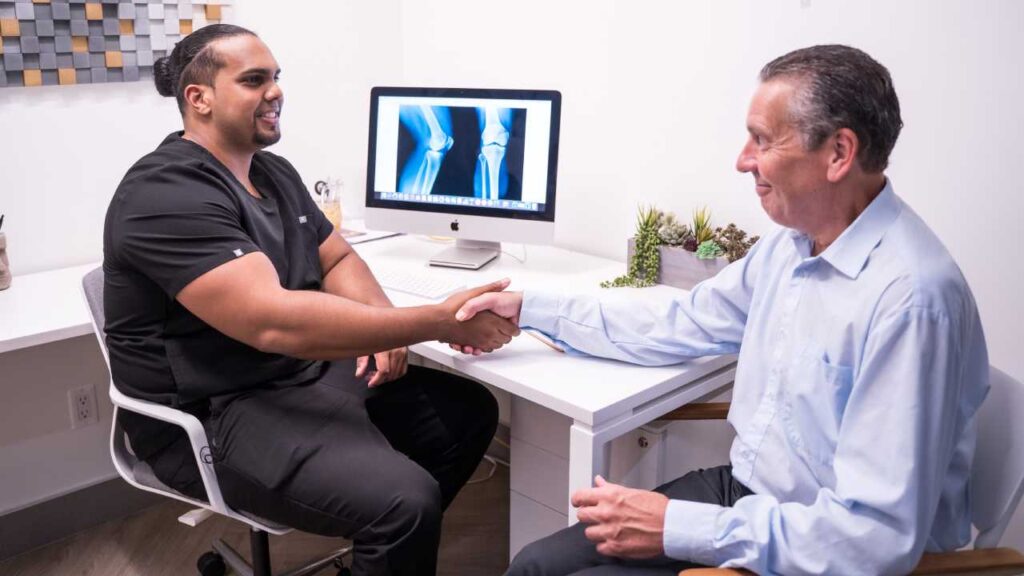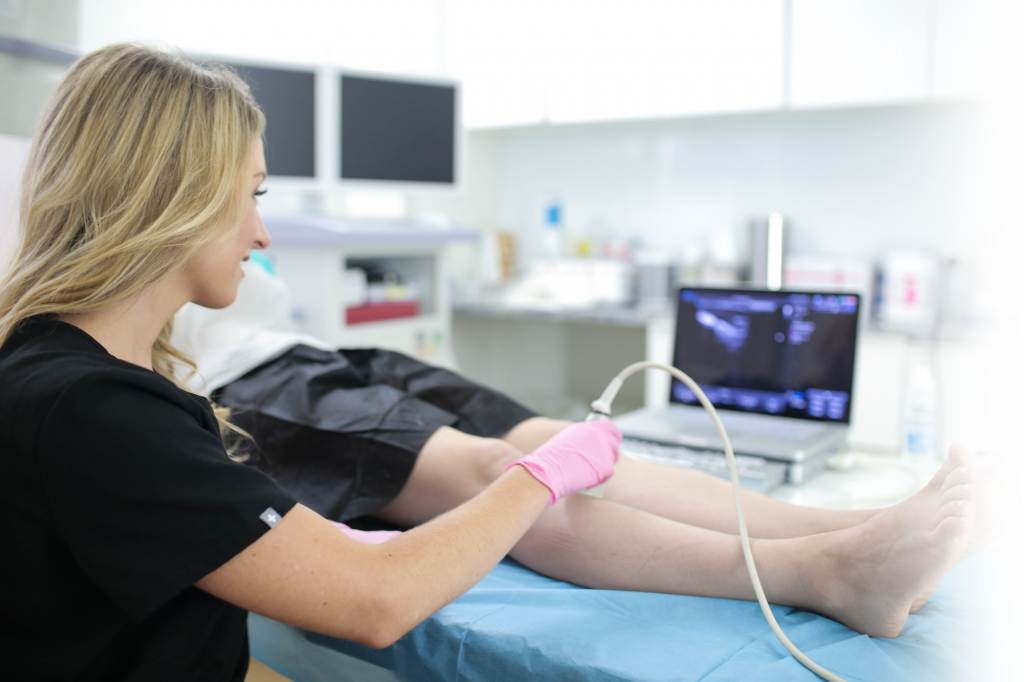Veins Popping out on Legs? Some Symptoms Can’t Be Ignored
Varicose veins and spider veins are common. In fact, 70-85% of the adult population has vein damage, with more prevalence among women. While hormonal factors like pregnancy and menopause make them more likely in women, anyone can develop spider veins or varicose veins at any age. Some veins are asymptomatic, but others produce frustrating or even life-threatening symptoms, like a pulmonary embolism or deep vein thrombosis. Click HERE to discuss your vein damage symptoms with award-winning NJ vein doctors. Read on to learn which symptoms you shouldn’t ignore.
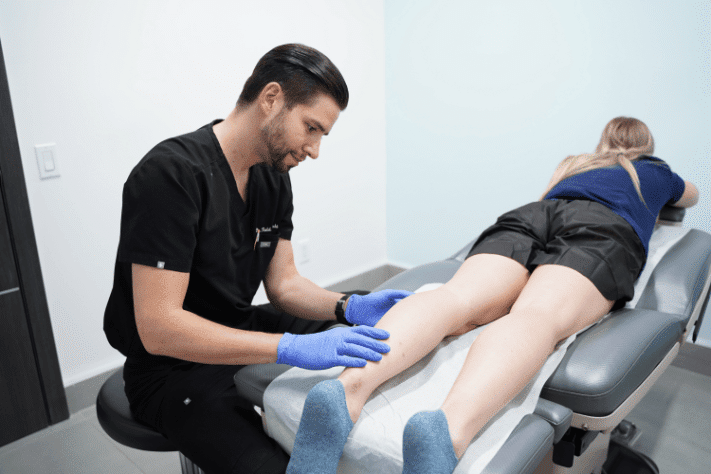
Varicose Veins Stages: When to Seek Treatment
Varicose veins and spider veins don’t always require treatment. But they often indicate issues in deeper veins that you can’t see from the surface, like weakened vein walls and valves, blood clots, and Chronic Venous Insufficiency. The severity of visible vein damage doesn’t always correlate to the stage of vein disease. While there are some common symptoms, no two patients have the same symptom profile or progression with varicose veins. Only a vein doctor with ultrasound technology can determine the scope of vein damage, so schedule an appointment to see if you need treatment. Here are symptoms you shouldn’t ignore.
Head to the ER for These Vein Damage Symptoms:
- A vein that won’t stop bleeding
- Skin above the vein that suddenly becomes painful, red, and inflamed
- Shortness of breath
- Chest pain
- Lightheadedness, fainting, sweating
- Sudden, extreme swelling
See a Vein Doctor Soon for These Vein Damage Symptoms:
- Enlarged, bulging veins
- Spider web-like veins
- Restless sensations or Restless Legs Syndrome
- Swelling in lower extremities
- Aches and cramps in legs
- Fatigue and heaviness in legs
- Burning, throbbing, pinching sensations
- Slow-healing wounds (venous ulcerations)
- Scaly rashes (venous stasis dermatitis)
- Temporary heavy bleeding when the vein is nicked (if it won’t stop, go to the ER)
- Changes in skin color (hyperpigmentation)
- Symptoms that worsen after sitting or standing for a while
- Symptoms that worsen as the day progresses
Thick Veins, Broken Capillaries on Legs: What’s Urgent?
Small blood vessels, like spider veins or broken capillaries on legs can be less painful than engorged, thick veins like varicose veins. But are they both equally urgent to treat? Spider veins and varicose veins in the legs frequently stem from the same disease, so in that sense, they should prompt the same level of concern. Chronic Venous Insufficiency produces spider veins and varicose veins, as well as symptoms like heaviness, swelling, restlessness, cramping, and itching in the legs. Untreated, this disease can also cause the venous ulcerations, stasis dermatitis, hyperpigmentation, and profuse bleeding listed above.
Sometimes spider veins and broken capillaries in other areas, like the face, are caused by sun damage or skin injuries (squeezing a pimple, illness, or exposure to extreme temperatures). But damaged leg veins are predominantly caused by vein disease. So, are broken capillaries, varicose veins, and spider veins equally crucial to treat? It’s important to let a vein specialist make that decision. Our Harvard-trained NJ vein doctors use Duplex Ultrasound to determine what’s causing your vein damage and whether treatment is optional or mandatory.
Treating a Ruptured Vein vs Spider Veins & Varicose Veins
The term “ruptured vein” is sometimes used incorrectly, so let’s look at the difference between ruptured veins and spider veins and varicose veins. First, veins and arteries are two different types of blood vessels, so a ruptured artery and a ruptured vein are two different issues. Arteries pump blood down and away from the heart, whereas veins carry blood back to the heart, using one-way valves to direct blood flow. Since arteries have no valves to control blood flow, a ruptured artery is a medical emergency, and bleeding can be life-threatening.
A ruptured vein beneath the skin, however, is not always an emergency- it depends on the size and location. But treat it as an emergency if a vein sustains an external abrasion and you can’t stop the bleeding. A spider vein or varicose vein is not a ruptured vein, but a vein that develops from excess pressure on the internal vein walls. When vein walls weaken or vein valves fail, blood flows in reverse and causes the vein to swell and contort (become varicose) or produce new offshoots (spider veins).
Spider veins and varicose veins have not “ruptured,” rather, they contort or branch out when blood pools within them. They do not cause external bleeding, unless they’re bumped or nicked. But bleeding can be heavy with abrasions to varicose veins, so head to the ER if bleeding doesn’t stop quickly.
Varicose Veins in Wrist, Veins in Upper Thigh: Same Urgency?
Some patients wonder whether the location of enlarged veins indicates whether they need treatment or not. Varicose veins in any part of the body can be serious or symptomatic, but protruding veins in the legs are most likely caused by vein disease. If you have enlarged veins in areas like the face, neck, wrists, or arms, these might be varicose. But they might also be healthy veins that are enlarged due to extra blood flowing through them during stress or exertion.
Areas with less fat, like the wrists and temples show veins more easily. So, a bulging vein in your face might signify tension or temperature change (notice if they’re larger after a hot shower or exercise) and a large vein in the arm or wrist might stem from typing, carrying groceries, or lifting weights. Note whether the vein reduces in size when you are at peace and at rest. A varicose vein won’t shrink much without treatment, so if it doesn’t change size noticeably, it’s more likely to be varicose. Visit our NJ vein center for confirmation of whether the vein is damaged, or healthy yet temporarily enlarged to accommodate extra blood when your heart rate increases.
How Urgent Is Varicose Veins Pregnancy Treatment?
Pregnancy increases blood volume dramatically, so it enlarges healthy veins (which will shrink after pregnancy), and also creates varicose veins for some patients. The excess pressure of the uterus on the pelvic veins and the increased blood flow, along with the hormonal shifts, all contribute to varicosities. In most cases, varicose veins are not dangerous to the fetus, and they are not advised to treat during pregnancy since your veins supply blood to the fetus. See a vein doctor if you develop varicose veins during pregnancy. They’ll make sure there are no urgent issues like blood clots involved, and they’ll design a treatment plan and schedule your procedure for after the delivery. They might recommend compression stockings or other tactics to minimize symptoms until treatment.
Do Men Get Varicose Veins? Why Everyone Should Pay Attention
Varicose veins are more common in women, but they’re very common in men as well. Studies show 40-50% of men will develop varicose veins in their lifetime. The same risks and symptoms women encounter with varicose veins apply to men. Furthermore, men have a higher likelihood of blood clots and deep vein thrombosis, and specifically recurrent blood clots, than women. Deep clots require a vein doctor’s ultrasonographic evaluation to detect. So, if you have visible vein damage or any of the symptoms above, schedule a consultation at one of our renowned vein centers in New Jersey.
Engorged Veins Treatment: What to Expect
Ready to seek treatment for your vein damage symptoms? Here’s what to expect. If you choose a minimally invasive vein specialist, and you definitely should, treatments take just 15-30 minutes. You won’t need hospitalization, general anesthesia, stitches, or recovery time. In fact, it’s back to business as usual after these gentle procedures. Vein doctors will either apply thermal energy, vein adhesives, sclerosing solutions, or rotating catheters to your vein walls, through pin-sized incisions in your skin.
These procedures close off the vein and reroute blood into healthy veins, prompting the damaged vein to shrink from sight. That’s all there is to it. So, don’t delay treatment, when a procedure you can complete within a lunch break could literally save your life.
Red Veins on Legs: Getting Rid of Discomfort + Displeasure
If you have bulging or spidery blue, purple, or red veins on your legs, you’re probably bothered by more than the uncomfortable symptoms. You want to feel better, and make sure the veins don’t spell serious trouble, but you’re also displeased by how they look. Our caring vein doctors understand. That’s why we treat veins both cosmetically and medicinally, closing them off in the least invasive way possible, so you aren’t left with large incisions, scars, or evidence of treatment.
Our procedures start working right away, so you don’t have to wait months or years for clear skin, like some surgical patients do. You won’t need stitches or big bandages, so you can go right back to your usual routine discreetly. But if you’re like most of our patients, you’ll be so thrilled with your results that you won’t be able to stop telling others about your treatment! Visit us to eliminate both the discomfort and displeasing appearance of vein damage.
